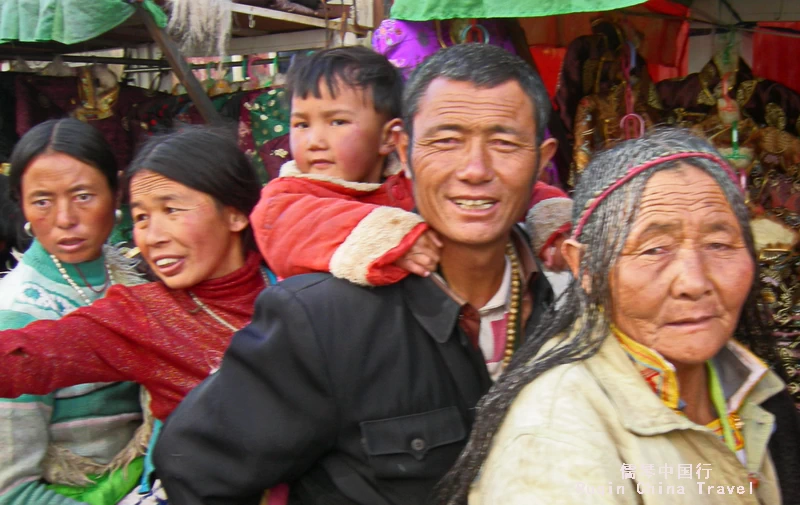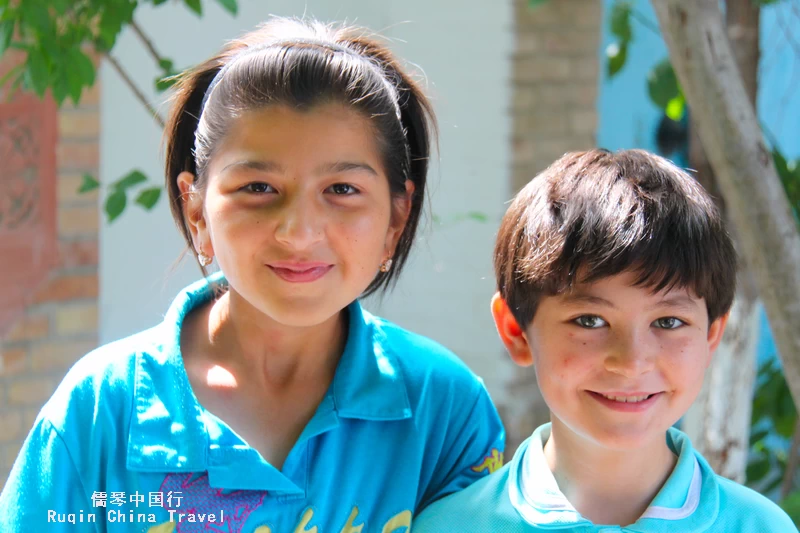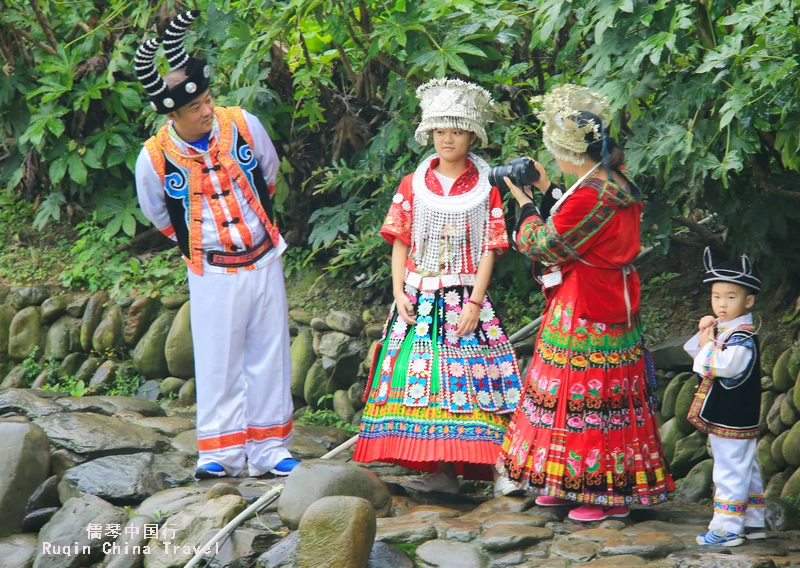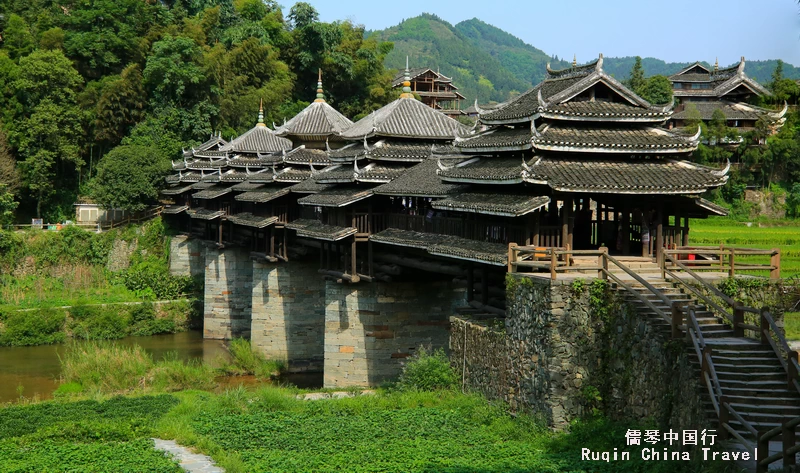For travelers, exploring China’s ethnic groups offers a unique opportunity to experience traditional lifestyles, festivals, and customs that have endured for centuries. This “A Complete Guide to Ethnic Groups in China for Travelers” provides an in-depth look into China’s ethnic diversity, helping tourists engage with China’s ethnic minorities and appreciate their heritage.
China is among the world’s most culturally diverse countries, home to 56 officially recognized ethnic groups. Each group contributes unique languages, traditions, and customs to China’s rich cultural landscape. While the Han Chinese make up over 90% of the population, the remaining ethnic minorities add vibrant cultural diversity.
Understanding China’s Ethnic Groups
China’s ethnic minorities live throughout the country, but many are concentrated in specific regions rich in cultural heritage. Yunnan, Xinjiang, Tibet, Guangxi, and Guizhou, in particular, are known for their ethnic diversity and rural traditions. Each group has its own language, clothing, religious beliefs, and customs, making each region unique and attractive to travelers.
In addition to the Han Chinese, well-known ethnic groups include the Zhuang, Hui, Manchu, Miao, Uyghur, Yi, Tujia, Tibetan, and Mongolian. Each of these groups celebrates vibrant festivals, practices unique traditions, and contributes to the fascinating cultural diversity of China. Learning about these groups offers insight into China’s cultural depth and helps travelers appreciate the heritage that shapes these communities.
The Zhuang People of Guangxi
The Zhuang people, China’s largest ethnic minority, primarily live in Guangxi Zhuang Autonomous Region in southern China. Known for their colorful clothing and unique language, the Zhuang are famous for their folk music and storytelling. Exploring Guangxi during the Zhuang’s traditional festivals, such as the Song Festival (San Yue San), allows visitors to witness their rich cultural heritage. Celebrations include singing competitions, dragon boat races, and traditional dances.
In Guangxi, travelers can experience Zhuang traditions in smaller villages and bustling markets. Here, the Zhuang still practice ancient agricultural methods and create handicrafts like embroidered textiles and bamboo products. Visiting Guangxi offers an authentic look at China’s ethnic diversity and provides a chance to connect with the Zhuang’s distinct cultural heritage.
The Tibetan People of Tibet and Sichuan
The Tibetan people, among China’s most culturally unique groups, live primarily in the Tibet Autonomous Region, as well as in parts of Sichuan, Gansu, and Qinghai. Known for their deep spiritual traditions, the Tibetan people incorporate Buddhist teachings into nearly every aspect of life. Travelers visiting Tibet experience a spiritual immersion through Tibetan festivals, rituals, and artwork.

Visiting during a major Tibetan festival, such as Losar (Tibetan New Year) or the Shoton Festival, gives travelers a chance to see Tibetan customs firsthand. Sites like the Potala Palace in Lhasa and Jokhang Temple offer insights into Tibetan Buddhism and are popular with travelers interested in spiritual tourism. Beyond religion, Tibet’s breathtaking landscapes, including Mount Everest and vast grasslands, play a central role in Tibetan culture.
The Uyghur People of Xinjiang
The Uyghur people, primarily reside in Xinjiang Uyghur Autonomous Region in northwest China. With Central Asian influences, Uyghur culture stands out in China. Known for vibrant music, dance, intricate carpets, and flavorful cuisine, Uyghur culture offers travelers a distinctive cultural experience.

In Xinjiang, visitors can sample Uyghur food like lamb skewers, naan, and hand-pulled noodles. Additionally, Uyghur music and dance, especially the traditional Muqam, provide a glimpse into this group’s cultural heritage. Travelers in Xinjiang often head to Kashgar, an ancient Silk Road city, to experience Uyghur culture in depth. Kashgar’s traditional markets, Uyghur architecture, and local cuisine give travelers a rich understanding of ethnic diversity in China.
The Miao People of Guizhou and Hunan
The Miao people, one of China’s oldest ethnic groups, are renowned for their elaborate silver jewelry and colorful clothing. Primarily located in Guizhou and Hunan, the Miao are skilled artisans, famous for their embroidery, weaving, and silverwork. Their culture has a close connection to nature, with many Miao villages located in beautiful mountain areas.

Visiting Guizhou during the Sisters’ Meal Festival allows travelers to witness Miao customs up close. In this festival, young Miao women, dressed in bright costumes and silver jewelry, prepare meals for young men, accompanied by lively music and dancing. The Miao’s musical heritage includes the Lusheng, a bamboo wind instrument often played at festivals. For travelers, experiencing Miao culture is an opportunity to observe rural traditions in China that have been preserved over generations.
The Dong People of Guizhou and Guangxi
The Dong people, found mainly in Guizhou and Guangxi, are famous for their Drum Tower architecture and Wind and Rain Bridges—structures built without nails. The Dong people’s polyphonic singing style, called Grand Songs (Dage), is a UNESCO Intangible Cultural Heritage. Dong villages, with their scenic settings and traditional lifestyles, offer travelers a unique look at China’s ethnic diversity.

The Dong New Year festival is an especially colorful celebration, featuring music, dance, and traditional feasts. Travelers visiting during this time will see Dong villagers in traditional dress, performing and celebrating. Touring Dong villages, such as Zhaoxing Village in Guizhou, provides an authentic and immersive experience, bringing travelers closer to the heart of rural traditions in China.
The Yi People of Yunnan and Sichuan
The Yi people, primarily located in Yunnan and Sichuan, celebrate some of China’s most lively festivals. Known for the Torch Festival, which includes bonfires, wrestling, and horse races, the Yi people gather each summer for this spirited event. For travelers, attending the Torch Festival provides a lively, colorful experience.
The Yi people have a distinct language and writing system and follow Bimoism, a traditional Yi religion. With their bright clothing and unique jewelry, the Yi people maintain a strong cultural identity. Travelers visiting Yunnan or Sichuan during the Torch Festival can participate in Yi festivities, enjoying traditional music, food, and dancing. The Yi’s rich cultural heritage adds to China’s ethnic diversity, making it a unique travel experience.
Experiencing Festivals of Chinese Ethnic Minorities
Festivals are a key part of China’s ethnic minorities’ cultures. Each festival has unique traditions rooted in history and spirituality, giving travelers a glimpse into ethnic diversity in China.
- Songkran Festival: Celebrated by the Dai people in Yunnan, this water-splashing festival is similar to Thailand’s Songkran, featuring water fights, boat races, and traditional performances.
- Nadam Fair: Held by the Mongolian people in Inner Mongolia, this festival celebrates the nomadic lifestyle with wrestling, archery, and horse racing.
- Shoton Festival: In Tibet, this festival includes Tibetan opera and a giant Buddha thangka unveiling ceremony, offering an exciting cultural event for tourists.
These festivals provide a rich, immersive experience, allowing tourists to connect with ethnic groups and appreciate their unique customs.
Tips for Exploring Ethnic Minority Regions in China
When visiting ethnic minority areas, travelers can enhance their experience by observing customs and respecting traditions. Here are a few tips:
- Learn Basic Phrases: Many ethnic groups have their own languages. Learning a few words shows respect and can lead to friendly interactions.
- Dress Appropriately: Many regions follow traditional dress codes, especially at sacred sites. Dress modestly to show respect.
- Respect Cultural Practices: Some groups may have customs against taking photos during ceremonies or of certain items. Asking for permission is a good practice.
- Try Local Food: Each ethnic group has its own cuisine. Sampling local dishes enhances the experience and supports local communities.
- Choose Ethical Tours: Many tours operate in ethnic regions. Ethical tours, which work closely with local communities, help preserve cultural heritage.
China’s Ethnic Diversity and Rural Traditions Explained
China’s ethnic diversity is central to its cultural landscape. These groups bring diverse languages, clothing styles, religious beliefs, and ways of life, adding to the cultural richness of the country. For tourists, visiting ethnic regions provides insight into China’s rural traditions and cultural heritage.
Places like Yunnan, Tibet, and Guangxi are especially known for their ethnic diversity. Exploring these regions allows travelers to experience the vibrant customs of China’s ethnic groups firsthand. As more travelers visit, respecting and preserving these unique cultures becomes increasingly important.
For travelers interested in China’s ethnic diversity, exploring regions and villages where ethnic minorities reside offers a rewarding cultural experience. “A Complete Guide to Ethnic Groups in China for Travelers” provides essential insights for navigating these regions and understanding each group’s traditions. By attending festivals, trying local foods, and respecting local customs, travelers can deepen their appreciation of China’s diverse heritage. Whether journeying through Tibet’s mountains, Yunnan’s villages, or Xinjiang’s markets, this guide leads travelers on a meaningful journey through China’s ethnic landscape.


